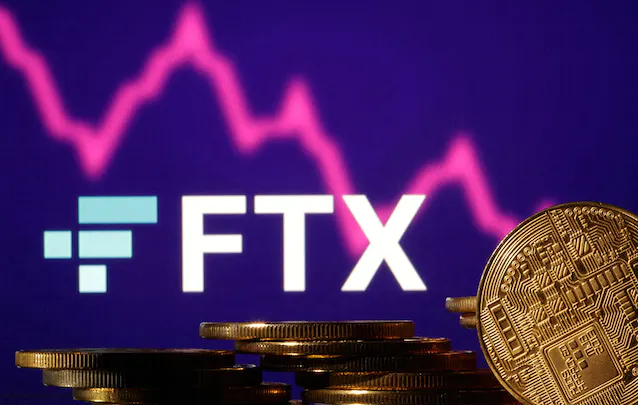Last Updated on 11/18/2022 by てんしょく飯
In the blink of an eye, the world’s leading U.S. crypto asset exchanger, which became a multi-billion dollar company in the blink of an eye after its establishment in 2019, has passed away in a flash.
The “god” of crypto assets has gone to hell: ……

The company that went bankrupt was FTX Trading Limited (FTX), which used top athletes such as Shohei Ohtani as ambassadors, had a team sponsorship agreement with Mercedes in F1, and had a subsidiary in Japan that was registered as a crypto asset exchange business.
The scale of the collapse of FTX Trading Limited (hereinafter referred to as “FTX”) was of a megaton scale, surpassing that of the Lehman Brothers collapse.
The founder of FTX, Sam Bankman Fried, was like a “god” in the crypto asset industry, having bailed out Blockfi, a major lending service provider, and Voyager Digital, a crypto asset broker, through acquisitions and loans, etc., when they were caught in the middle of the credit crunch in May and June of this year. He was a “god” in the crypto asset industry.
The “god” of the industry, who built a multi-billion dollar company at the age of just 30, made the foolish mistake of using client assets as a source of financing for his affiliated companies.
The credit crunch in the crypto-asset-related industry has proceeded apace since the spring of this year. The credit crunch in the crypto-asset industry, which began in the spring of this year, is now reaching its climax as funds are pouring out of the industry all at once.
The following is a prediction of the tragic end that will happen to crypto assets in the future, based on the two factors of “difficulty in preserving customer assets” and “credit crunch” of crypto assets, which are an emerging market.
Inability to protect investors’ assets
First is the “difficulty in protecting customer assets.
FTX has already filed for Chapter 11 bankruptcy protection, and since the name of the Japanese corporation FTX Japan is included among its affiliates, the Japanese authorities have been forced to take action to strictly protect assets.
Already, the Kanto Local Finance Bureau issued a business suspension order and a business improvement order to FTX Japan shortly after 10:00 p.m. on November 10, Japan time.
The reason for the order is that “FTX Japan has suspended the withdrawal of margins for trading without providing clear reasons to investors and without specifying a schedule for resumption of trading, claiming that it is the policy of its parent company, FTX, while continuing to accept assets from parties and to conduct crypto asset trading with investors.
The services subject to the business suspension are described as services related to OTC derivatives transactions and services to newly receive deposits of margins, etc. for OTC derivatives transactions for the one-month period from November 10 to December 9, 2012.
At the same time, the order to hold assets in Japan and the preservation, etc. of assets received on deposit are subject to the order.
The FSA and the Japan Crypto Asset Traders Association (JVCEA), a self-regulatory organization, are under pressure to deal with the bankruptcy of registered firms for the first time since the start of the Funds Settlement Law in 2017.
Although several operators have faced tough times, including the hacking of Coincheck in 2018 and Zaif (now Kaika Exchange) in the same year, none have gone bankrupt (Tech Bureau, which operated Zaif, closed its crypto asset exchange business after the business was transferred).
This is the first case of its kind, and the actions of the authorities and self-regulatory organizations will be closely watched.
FTX Japan’s domestic FTX Japan funds in custody are several tens of billions of yen, a fraction of the hundreds of billions of yen held by bitFlyer and Coincheck, the largest players in the industry (Coincheck’s latest data was 279.4 billion yen in Q2 FY03/2023, Monex G data released on October 28, 2012).
Cutting only here, it would appear that “the impact on domestic users is limited.
However, crypto assets are not that simple. Japan is the only country in the world where the segregation of users is clearly mandated by law.
If FTX Japan entrusted its parent company, FTX, with the management of its customers’ assets (including crypto assets), the jurisdiction would be the US.
It is unclear whether the “right to demand redemption” can be exercised in the U.S., where Japanese laws and regulations do not apply. It is already known that a large portion of the $10 billion that FTX had loaned to Alameda Research, a crypto asset-related company owned by founder Sam Bankman Fried, came from assets entrusted by FTX’s customers.
Considering the situation where the FTX, which is in financial difficulty, could have ordered FTX Japan to “send the funds,” the significance of the Kanto Local Finance Bureau’s November 10 order to “hold the assets in Japan” is significant.
If tens of billions of yen in assets under custody held by FTX Japan had already been sent to FTX, it would inevitably complicate the preservation of customer assets.
Domestic authorities will have no choice but to take action in cooperation with regulators in other countries.
Lehman Shock Class Failures
Next is the “credit crunch. The level of the “credit crunch” is quite different from that experienced by crypto-asset-related businesses in the wake of the collapse of algorithmic stave token prices from May to June of this year.
At that time, a series of multi-billion dollar failures, including those of Celsius, a major US lending service provider, and Three Arrows Capital, a major crypto asset hedge fund, triggered the entry of the “crypto asset winter period,” but this time, the collapse of one of the world’s leading crypto asset exchanges, which is competing with Coinbase, Binance, OKex, etc. The latest is the collapse of one of the world’s leading crypto asset exchanges, competing with Coinbase, Binance, OKex, and others.
So far, the total debt is in the megaton range of tens of billions of dollars and more than 100,000 creditors. Although the market size is different, it would be easier to understand if we say that the situation is similar to the Lehman Brothers collapse in 2008.
Many domestic and foreign crypto asset exchangers have announced that they have no business relationship with the FTX and that they are conducting segregated management, etc. as a matter of course, but not only users but also lenders (banks and venture capitals (VCs)) are skeptical.
Softbank G has invested about $100 million through its funds, and Sequoia Capital, a major VC firm, has also been hurt. While it is possible that a company may fail if it is not strong enough, the damage that can be done with this type of financing and investment is not unexpected.
The real fear is the impact of a decline in crypto assets themselves, led by bitcoin.
Crypto asset industry goes into “hibernation
The total market capitalization of crypto assets as a whole was $1 trillion as of November 8, according to Coin Market Cap data, but fell below $800 billion as of November 10.
In fact, in 48 hours, $200 billion in market capitalization was blown away, and the entire value of crypto assets, which was $2 trillion as of April 1, has disappeared by 60% in about six months. This is a great situation if you are in a short position, but given the investment world, which is mostly long, this loss of value bounces directly back to the investor.
Grayscale Investments, a leading U.S. crypto asset fund, had tens of billions of dollars in crypto asset funds at its peak.
In other words, even if they are not investing directly in crypto assets, there are many investors who are investing indirectly in crypto assets.
Although crypto assets do not have complex and intertwined financial instruments like the subprime crisis of 2008, there will be more sad stories toward the end of the year, such as losses incurred by investing in crypto assets through funds, etc., or the business of crypto asset funds themselves coming to a standstill.
Perhaps the aftereffects of the FTX bankruptcy will be the biggest the crypto asset industry has ever experienced.
We believe we have moved from the “crypto asset winter period” to “crypto asset hibernation.
In addition, in our series of articles, “The Bitcoin ‘Crash’ is the ‘Death of Virtual Currencies’…! The “reality is too bad” at the scene of the “screaming”…! In this article, we report on the “behind-the-scenes” of the bitcoin situation.


コメント